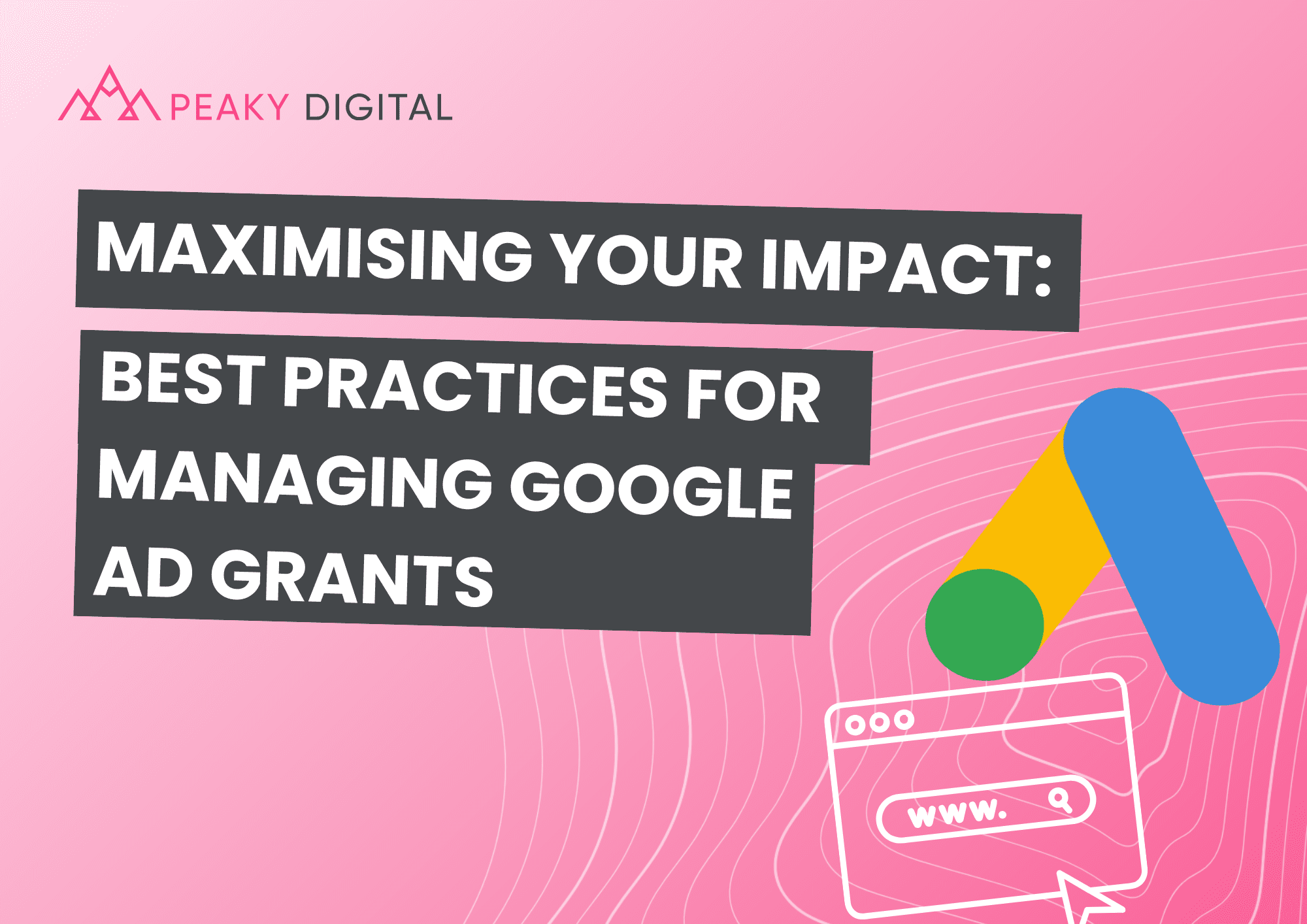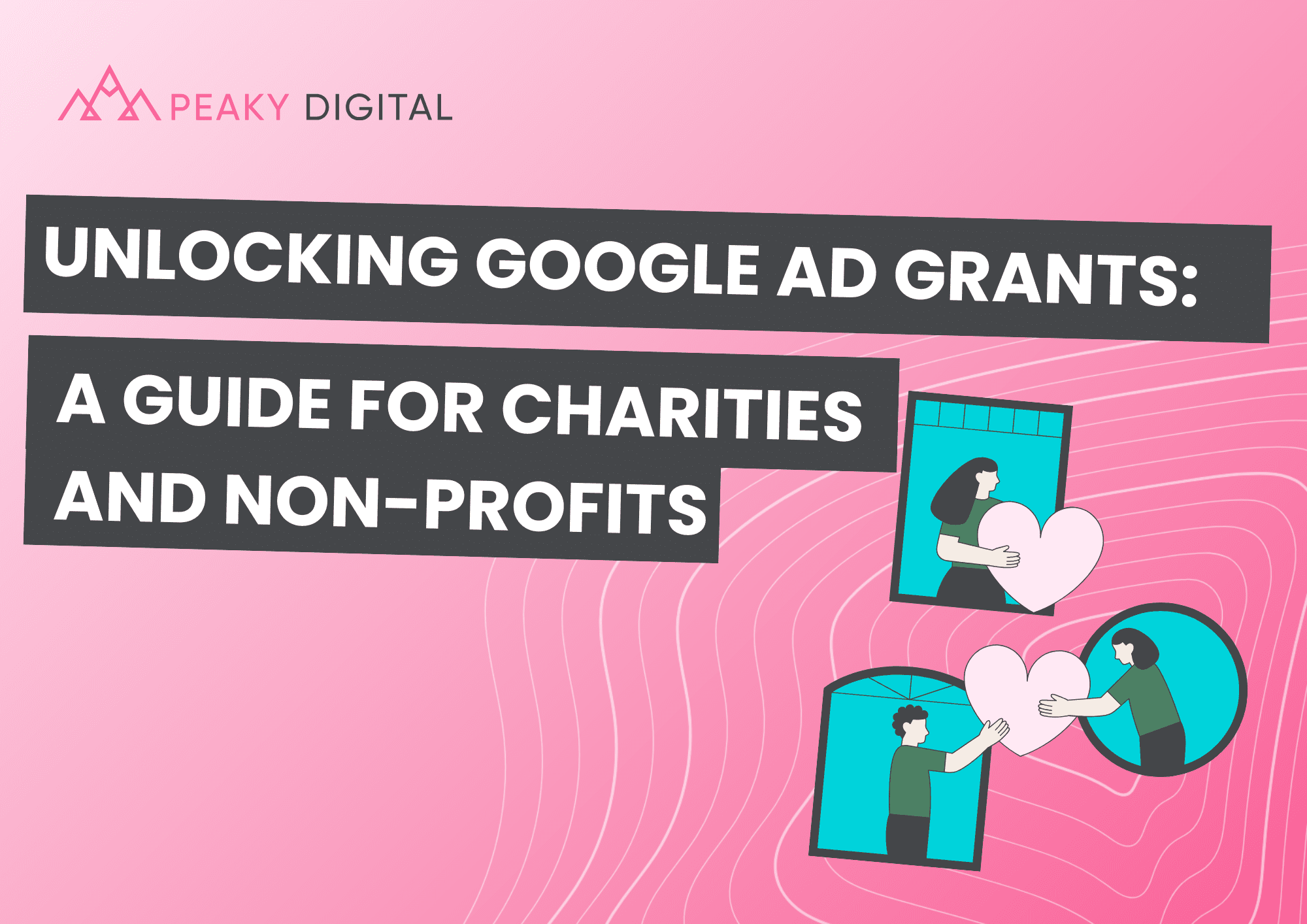
Maximising Your Impact: Best Practices for Managing Google Ad Grants
Apr 3, 2025
You’ve got the Google Ad grant for your organisation—but what’s next? Having free ad spend…
by Natalie Temple
Jan 19, 2023

Web accessibility is a critical aspect of modern web design, yet it is often treated as an afterthought. The importance of accessible websites cannot be overstated, as they provide equal access to information and functionality for all users, regardless of their abilities or disabilities.
Creating accessible digital spaces is not only a legal requirement but also an ethical one, as it ensures that everyone has an equal opportunity to access the information and services provided by the website.
Accessible websites also provide a multitude of cross-channel benefits, including but not limited to, improving user experience (UX) and conversion rate optimisation (CRO), promoting brand loyalty, boosting search engine rankings and increasing revenue.
In this guide, we will explore the essential elements of web accessibility, how to implement them in your own website and the importance of ongoing accessibility testing.
When discussing web accessibility, it is vital to understand how the key principles of accessibility also apply to all digital spaces, such as mobile devices, apps, video content and electronic documents. .
The World Wide Web Consortium, or W3C, is the governing body that promotes ‘Web for All’ principles. W3C defines accessibility as:
“Web accessibility means that people with disabilities can use the Web. More specifically, Web accessibility means that people with disabilities can perceive, understand, navigate, and interact with the Web, and that they can contribute to the Web. Web accessibility also benefits others, including older people with changing abilities due to aging”
Although the definition of web accessibility focuses on the needs of users with disabilities, creating a useable digital space also benefits the global experience for able-bodied users alike.
To start, it’s important to understand the different types of disabilities that can impact a user’s ability to navigate a website. These include visual, auditory, motor, and cognitive impairments, among others.
However, disabilities can also be permanent, temporary or situational.
This means that everyone is likely to experience a disability at some point in their lifetime, and websites that don’t cater to all users may be missing out on conversions.
Accessibility compliance is built on four core principles put forward by the W3C. The Web Content Accessibility Guidelines (WCAG) are designed to provide a standard for every stage of the online experience. They are updated regularly to ensure new laws and developments in technology are taken into account. The overall principles are as follows:
Adherence to the above can be achieved through implementing some of the below elements, as well as regularly reviewing and testing your content.
Although implementing web accessibility to your site may seem complex, there are some simple ways to ensure that your website is compliant without compromising on brand messaging.
Decide on a clear and consistent navigational structure
This includes using clear and descriptive headings and labels, as well as providing clear and consistent navigation links throughout the website. Designers should ensure that the website’s structure is logical and easy to understand, with a clear hierarchy of information.
Provide alternative text for images
This ensures that users who are visually impaired can still understand the content of images on the site. This can be accomplished by using the ‘alt’ attribute for images in the HTML code.
Use proper colour contrast
This is important for users with visual impairments, as it ensures that text and other elements on the site are easy to read. The WCAG recommends a contrast ratio of at least 4.5:1 for normal text and 3:1 for large text.
Make sure your site can be navigated using only a keyboard
This is important for users who cannot use a mouse or other pointing device. This can be accomplished by ensuring that all interactive elements on the site have a ‘tabindex’ attribute and that they can be accessed and interacted with using only the keyboard.
Provide captions and transcripts for videos
This is important for users who are deaf or hard of hearing, as it ensures that they can still understand the content of videos on the site.
Ongoing testing of your website will ensure compliance with accessibility principles. This includes using automated tools to check for common accessibility issues, as well as manual testing to identify any issues that may not be caught by automated tools. Additionally, designers should involve users with disabilities in the testing process to ensure that the website is usable for all.
A full list of useful accessibility testing tools is available on the W3C website, where website owners can find something for all stages of the development process.
We have compiled a short list of some of our favourite testing tools from the directory:
Looking for ways to incorporate accessibility into your SEO strategy? Need advice on website accessibility and UX? Talk to the Peaky Digital team today!
Brand awareness, business growth or a bigger and better ROI, our team of digital specialists are here to help you get the most from your brand. Let's start a new partnership today.

Apr 3, 2025
You’ve got the Google Ad grant for your organisation—but what’s next? Having free ad spend…

Apr 2, 2025
Imagine having up to $10,000 of free advertising every single month to shout about your cause. …

Apr 1, 2025
In today’s fast-paced digital world, ensuring your brand is represented accurately across online platforms is crucial….